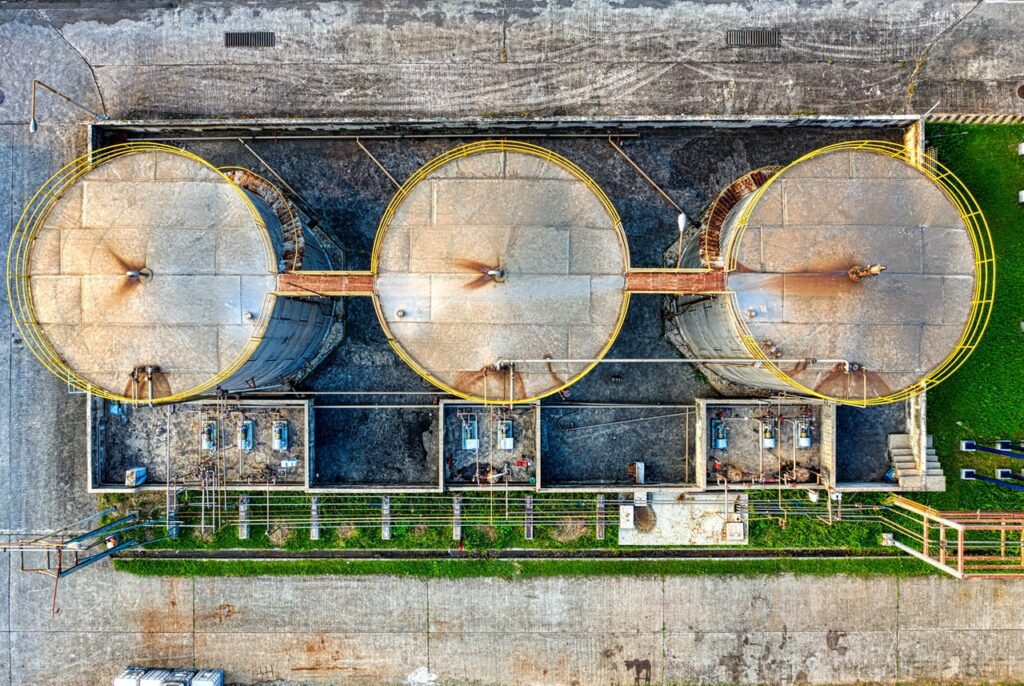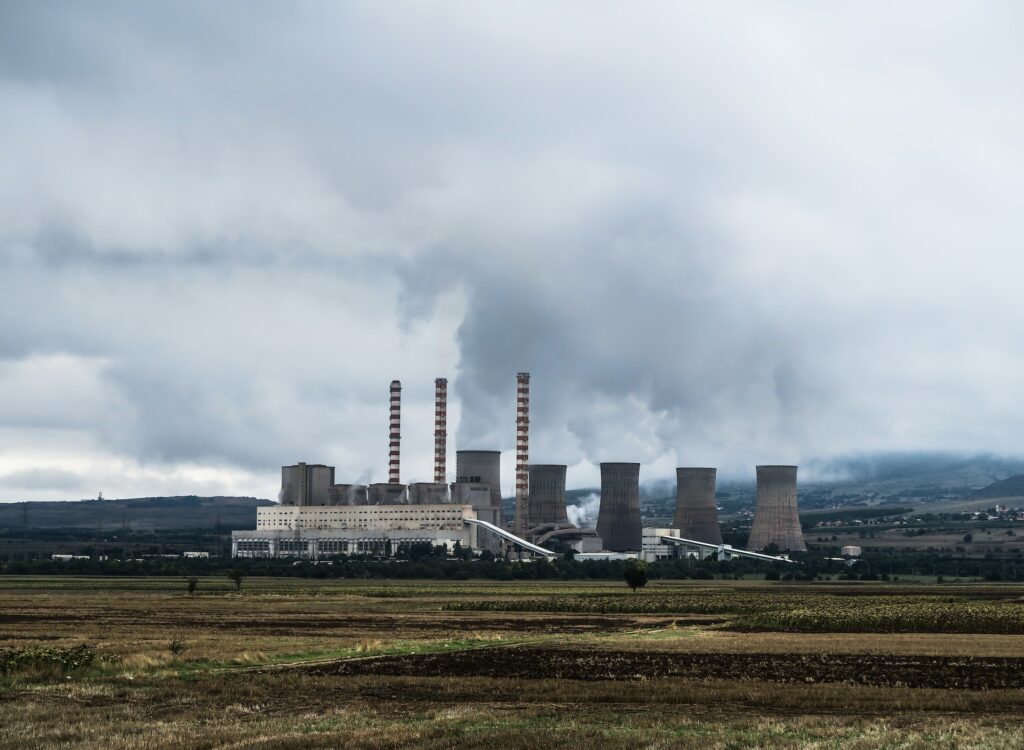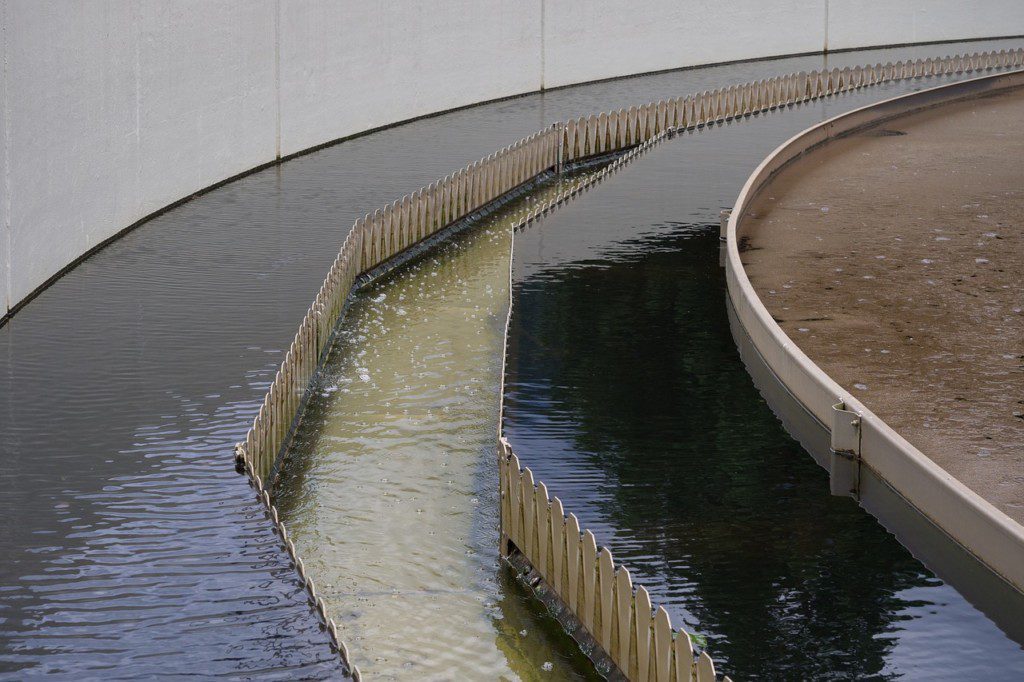05/13/2024 | Industrial Water Treatment | 14 MINUTE READ
Detecting Leaks and Contaminants in Industrial Cooling Systems

In the manufacturing industry, clean, high-quality coolant is an essential component of industrial cooling systems. These systems effectively cool equipment and parts to avoid overheating issues. By regulating temperatures and ensuring that processes occur without delay, industrial cooling systems increase energy efficiency, provide ample cost savings, and boost productivity.
Maintaining coolant integrity is among the most critical aspects of keeping a cooling system in good working order. To ensure these systems contain enough coolant, liquid leak detection is crucial. You must also prevent corrosion, scaling, and biofilm growth.
Conductivity and pH sensors can detect leaks and contaminants. These devices allow you to identify even the smallest changes to water chemistry. This article takes an in-depth look at using conductivity and pH sensors to find leaks and measure contaminant levels in your cooling system.

Understanding Industrial Cooling Systems
Industrial facilities use robust cooling systems daily to ensure their processes can be completed without issue or delay. This cooling is applied to maintain constant and precise temperature control in a specific process. For example, chillers are often used to capture heat from a process. These systems can cool equipment and components regardless of the application’s heat load, flow requirements, or ambient temperature.
Industrial cooling systems use glycol coolant to maintain temperatures effectively. Glycol is an organic compound in the alcohol family. It consists of propylene glycol and ethylene glycol. Ethylene glycol is used in HVAC units and vehicles as antifreeze. Propylene glycol isn’t toxic, which allows it to be used for many more applications.
In an industrial cooling system, glycol is mixed with water, reducing its freezing point to around -60 degrees Fahrenheit. When this substance is applied to pipes and other components in industrial facilities, the freezing temperatures help with heat dissipation.
Industrial cooling systems must contend with numerous issues, the primary of which is corrosion. Since closed-loop systems don’t lose much water and are rarely maintained, corrosion is more likely to develop. Over time, corrosion can damage the system considerably, requiring expensive repairs.
Scale can also develop in cooling systems. Heat exchange surfaces are responsible for performing the primary function of a cooling system, and they are also the areas where scale development is prevalent. Scale occurs when high temperatures alter the substances in the water. The calcium will form into hardened deposits along the heat exchange surfaces, which hurts heat dispersal and creates inefficiencies in the system. Energy consumption will increase immediately, which should be noticeable when you go to pay your monthly utility bills.
Because of the nutrient-rich environment, you might also encounter bacteria growth in industrial cooling systems. Over time, this growth can lead to the development of biofilm, which hampers the system’s operation. Biofilm is even more damaging than scale because of how well it insulates. If a combination of scale and biofilm damages an industrial cooling system, repairing it can take thousands of dollars. You may be tasked with replacing the system altogether. However, this is optional if you keep contaminants from accumulating in your cooling system.

Conductivity Sensors: Detecting Leaks
Detecting contaminant levels and leaks in coolant requires the use of conductivity sensors and pH sensors. Conductivity sensors measure a solution’s electrical current. The readings are displayed as µS/cm, representing microSiemens per centimeter. The specific conductivity value shown on the sensor depends on the concentration of ions in the solution. Make sure you calibrate your conductivity sensor before each measurement to ensure accuracy.
When the sensor is placed into the solution being tested, it emits an electrical charge through a conductivity probe. If the number of dissolved ions in the solution increases or decreases, the electrical charge responds in kind. The meter measures the charge to determine the solution’s current conductance.
Conductance will also be high if the solution’s ion concentration is high. When the electrical current is slow, you’ll receive a lower conductivity reading. Conductivity sensors don’t require as much maintenance as pH meters, which is why industrial facilities prefer using them for early leak detection.
Detecting leaks using conductivity sensors is straightforward. Place one sensor before the possible leak source and another after it. If there’s a leak in the system, the conductivity sensors should provide different measurements. Any conductivity difference indicates a leak.
Depending on the size of your facility and the standard flow rate through your system, a leak could cause you to lose a considerable amount of coolant every day. Early leak detection is crucial to ensure your costs remain reasonable. Conductivity sensors have helped industrial facilities and refineries save money for years. A refinery with a crude oil capacity of close to 10 mt could save around $100,000 per year based solely on conductivity measurements from a high-quality sensor.
Remember that you can use different conductivity probes in your industrial cooling system. While all conductivity sensors measure conductance between electrodes, they can have different setups. Regardless of the type of sensor you choose, you won’t receive a direct measurement of ions. The readings only infer how many ions are in the solution by adequately measuring the electrical charge.
A potentiometric conductivity sensor consists of four electrodes. The outside rings apply different voltages to the solution to create a current. At the same time, the rings within the probe’s center measure the current’s drop to produce a final reading, which you’ll see on the sensor’s display. These conductivity sensors can also measure the total dissolved solids (TDS) concentration in your solution, which can tell you how contaminated it is.
Amperometric probes come with two electrodes and a probe made with non-reactive material. The electrodes can contact the coolant you’re testing simultaneously. Make sure that the whole conducting area remains submerged to obtain precise readings. Since conductivity readings can change based on the solution’s temperature, keep it close to 77 degrees Fahrenheit.
pH Sensors: Detecting Contaminants
While conductivity sensors effectively identify leaks, pH sensors are better for measuring contaminant levels. This type of sensor is designed to measure the pH of a solution, which can range from 0-14. When the pH level is below 7.0, the solution is acidic. You have an alkaline solution if you receive a reading that’s higher than 7.0. In most situations, it’s best to have a balanced pH reading around 6.5-7.5. Scale buildup and biofilm growth occur in alkaline conditions.
When using a pH sensor, your readings can tell you exactly how contaminated the coolant is. The ideal pH level for coolant is around 7.5-9.0. If you receive readings above 9.0, you may notice scale deposits on the heat transfer surfaces. When the pH level dips below 7.0, the process fluid will likely become contaminated with dissolved metals and other harmful substances. Each type of contaminant can cause different fluctuations within the coolant.
These sensors can provide highly accurate contamination readings and are used across various industries. For example, these sensors are commonly employed in environmental science applications to monitor the ongoing health of aquatic ecosystems. You can place a pH sensor in ocean and river water without major calibration issues. These sensors also ensure the pH levels of beer, soft drinks, and dairy are adequately maintained.
There are several types of pH sensors on the market. However, these devices are built for a wide range of applications. You’ll likely require a heavy-duty one when using a pH sensor in an industrial cooling system. Combination pH sensors are the most common and affordable devices on the market. They are equipped with a reference electrode and a measuring electrode. These sensors measure the tiny electrical difference between the electrodes to provide reliable readings.
If you’d like to monitor the coolant in your industrial cooling system regularly, consider using a differential sensor. This heavy-duty sensor comes with an extra electrode to effectively prevent reference fouling. All three electrodes have different functions. While the initial two electrodes are similar to those found in combination sensors, the extra one is designed to be a metal ground conductor.
While it’s not perfect for industrial cooling systems, some facilities use laboratory pH sensors, which are lighter than other models. These sensors use combination pH technology for applications like pool monitoring and environmental sampling. The main advantage of using this type of sensor is that it can be customized to match the specific application.

Consider process pH sensors if you’re looking for high durability and long-lasting technology. These devices use high-quality combination sensor technology to provide you with better accuracy. Since these sensors contain process connections, they can deliver continuous monitoring. You can mount a process sensor to a tank or pipe without experiencing fouling issues. While there are several other strategies you can use to measure pH in cooling systems, sensors offer many advantages, the primary of which include the following:
- It’s the fastest and easiest way to measure pH
- You can calibrate the sensor with a standard buffer solution
- You’ll receive specific numerical pH values
- It can be used in many unique applications
- You’ll receive precise pH values if you opt for the best sensors
Integrating Conductivity and pH Sensors for Comprehensive Monitoring
Conductivity and pH sensors must be used to perform comprehensive monitoring to save money and get precise results. As mentioned before, maintaining the cooling system in your facility can save you a lot of money. If you don’t detect leaks early, your facility’s water or coolant consumption will spike. If you miss high contaminant levels that eventually lead to corrosion, fouling, and scale buildup, the system will become much less efficient, which wastes money.
Both types of sensors have their advantages. Conductivity sensors are most effective at detecting leaks in your cooling system. A pH sensor will tell you if the coolant is contaminated. You can also use these sensors to confirm the readings you get. If the conductivity sensor indicates that the coolant is clean while the pH sensor tells you the opposite, one may need better calibrated. Combining data from these sensors enhances accuracy. Industrial facilities have saved immense sums of money by implementing integrated monitoring systems that provide continuous readings.
Implementing Preventive Measures
To keep your industrial cooling system running efficiently, make sure you perform regular maintenance and inspections. Leaks can grow. If you do monthly inspections, you can catch coolant leaks before they become too unwieldy. Maintaining the system regularly should also reduce the need for repairs.
To minimize the risk of contaminants, obtain numerous pH readings every day. If the pH readings climb above 9.0 or dip below 7.5, you may need to add substances to the water to balance the chemistry and maintain the correct pH range. Any employees who work with these systems should receive training to ensure your facility has proactive monitoring and response.
When you’re trying to prevent contaminants, be on the lookout for the formation of scale deposits and biofilm. As mentioned, scale deposits will appear on the heat transfer surfaces. There are several things you can do to control scale and biofilm. You can use chemical additives or maintain sub-saturated conditions within the cooling system for scale deposits.
The scale-forming salts will remain soluble when you keep the cooling system at sub-saturation conditions. In most cases, you’ll need to achieve a low pH and high blowdown rates to ensure the soluble salts aren’t exceeded on the heat transfer surface. Make sure that pH readings are precise as well. Scaling can occur if the heat load or water chemistry changes even a tiny amount.

You can also control scaling with chemical additives, which include chelates and sequestering agents. While chemical additives can reduce scaling, the solution must contain low metal concentrations. Make sure you deposit the control agents at low dosages, allowing supersaturation without causing scale formation.
Phosphates and acrylate polymers are the scale inhibitors most often used by industrial facilities. However, acrylate polymers are usually more effective than phosphonates. Make sure you pair the scale control agent with a dispersant.
Chemical modifications are likely needed to prevent biofilms. Ion coatings and biocides can prevent the spread of this substance by keeping immature biofilms from expanding and attaching. However, these coatings may only remain effective for a week or so.
You can also consider using specific purification methods to prevent biofilm. One technique involves the traditional reverse osmosis method, while the other uses a double reverse osmosis method. Double reverse osmosis involves performing electric deionization to disinfect the solution with UV light continuously. The solution must also be thoroughly disinfected with ozone weekly. When this strategy was used to test bacterial colonies, it was found that a highly purified solution was less likely to accommodate bacteria colony adherence. In this scenario, the development and spread of biofilm may not occur.
Future Trends and Technologies
Sensor technology is becoming more efficient and precise through artificial intelligence, machine learning, and other advancements. The latest sensors also offer early warning alerts and real-time monitoring. While predictive maintenance has mainly been used in the healthcare industry, it’s also possible that predictive maintenance will be used to detect possible equipment defects before they occur. Predictive maintenance could reduce repair frequency and costs.
With the rapid advancement of AI, industrial cooling systems will eventually be monitored by artificial intelligence. This technology could deliver more accurate measurements and save time. In recent years, researchers and scientists have performed numerous studies to determine the viability of AI in water quality testing.
While AI still needs to develop considerably, deep learning is one area that is beneficial for conductivity and pH sensors. This form of AI uses convolutional neural networks modeled to function like a human brain. Today, this technology is mainly used to correctly identify text, voice, and facial features. It can also classify sets of objects that don’t have specific features.
Researchers have begun to implement these techniques and AI technology in medical applications. Deep learning can help identify contaminants and diseases by making modern diagnostic devices more accurate and reducing the need for manual labor. While AI has yet to be used for water-quality purposes, researchers believe it might eventually become powerful enough to help with sensor devices.
An increasing percentage of industrial facilities are also adopting sustainable practices to enhance cooling system efficiency and safety. You can simultaneously lower costs and protect the environment by using the safest and most efficient equipment. First, energy audits are performed to identify areas that need improvement. You can use the information from these documents to enhance the sustainability of your facility.
One change you can easily make in your facility involves using green cleaning methods. Traditional cleaning chemicals can be hazardous. To promote safer substances, implement a green cleaning strategy focusing on sustainable cleaning products outfitted with a Green Seal certification. You should also set goals you can measure. For example, consider setting a one-year deadline for switching 80% of your cleaning products to green alternatives. Some of the other sustainability practices you can use in your facility include the following:
- Minimize coolant and water waste in your cooling system
- Perform preventive maintenance
- Use renewable energy sources
- Replace old HVAC units, windows, and boilers in your facility
Conclusion
If you use an industrial cooling system in your facility, detecting leaks and contaminants is necessary to avoid waste, minimize expenses, and extend the unit’s longevity. To maintain system integrity, you must use conductivity and pH sensors. Both sensor types can tell you if leaks are present and how high the contaminant levels are. Continuous cooling system monitoring allows you to identify and address problems early on.
Posted by Joshua Samp on May 13, 2024
Sensorex is a global leader in the design and manufacture of quality sensors for water quality and process applications. The company offers more than 2000 sensor packages for pH, ORP, conductivity, dissolved oxygen, free chlorine, chlorine dioxide, UV transmittance and other specialty measurements, as well as a full line of sensor accessories and transmitters. Its expert technical support engineers solve analytical sensor challenges with custom designs and off the shelf products.




